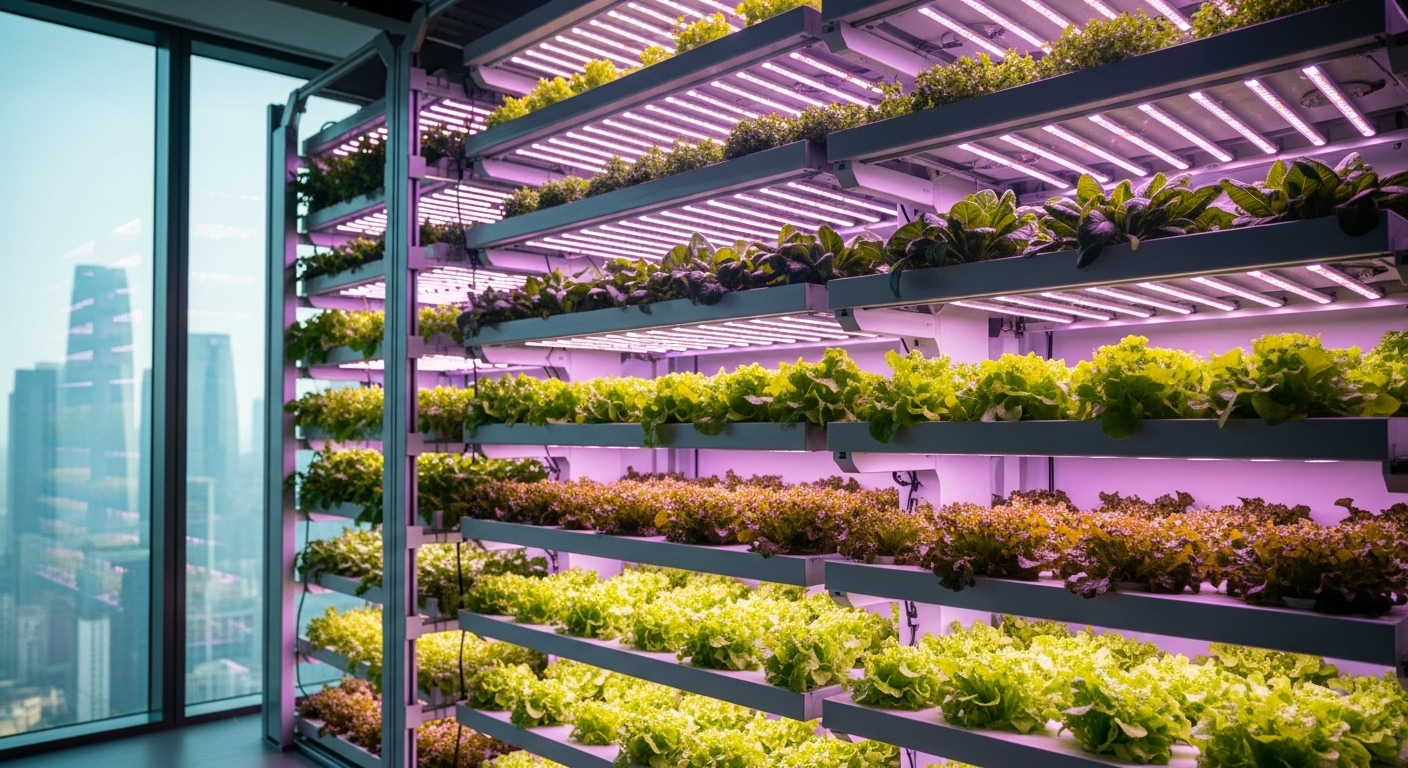The Urban Harvest: How Vertical Farms Are Revolutionizing City Food Systems
The Current Reality: A Crisis of Distance and Waste
Take a look at the salad on your plate. Chances are, it traveled over 1,500 miles to get to your local store. This long journey doesn't just rack up carbon emissions; it costs us valuable nutrition and results in massive food spoilage. As 70% of the global population moves into urban areas, the ancient challenge of feeding a city has met its modern breaking point.
The solution isn't more farmland; it’s smarter, stackable technology—a full agricultural revolution happening right inside our city limits.
I. Technology as the New Topsoil
Vertical farming is the ultimate application of Controlled Environment Agriculture (CEA), transforming dormant urban warehouses into hyper-efficient food factories. The key is divorcing the crop from the variability of outdoor soil and weather, thanks to three core technologies:
💧 Water Efficiency (Hydroponics & Aeroponics): These systems deliver nutrient-rich water directly to plant roots, virtually eliminating waste. A vertical farm can use up to 95% less water than a traditional farm, a critical advantage in an era of global drought.
💡 Optimized Sunlight (LED Grow Lights): Instead of relying on the sun's inconsistent light, specialized LED arrays provide the exact wavelength and intensity needed for peak photosynthesis. This guarantees rapid, year-round growth and ensures consistently perfect produce.
🧠 Precision Control (IoT & AI): The entire operation is run by smart systems. Sensors monitor every variable—temperature, humidity, and nutrient mix—while AI algorithms predict and adjust conditions in real-time. This level of precision eliminates pests and the need for chemical pesticides, resulting in cleaner food.
II. The Massive Urban Advantage: Zero Food Miles
Bringing the farm to the city’s doorstep unlocks immediate, powerful benefits:
Maximum Freshness: Produce is often harvested and delivered to stores within hours, not weeks. This locks in flavor and nutritional density that is lost during long-distance transport.
Land Reclamation: Vertical farms utilize a building’s height, requiring dramatically less horizontal space. This technology repurposes unused warehouses and vertical real estate, rather than consuming vast tracts of natural land.
Complete Climate Resilience: By being sealed off from the outside, the crops are completely immune to droughts, floods, sudden freezes, or any of the extreme weather events that threaten global supply chains.
III. The Energy Hurdle: The Race to Carbon Neutral
The most significant challenge for vertical farming is the energy demand required to power the lights and climate control (HVAC). Critics correctly point out that swapping gas-guzzling trucks for energy-intensive lighting isn't a sustainable trade-off—unless the energy is clean.
The industry is rapidly addressing this:
Green Power Integration: New facilities are strategically built next to or powered entirely by solar arrays or wind farms.
Circular Economy Solutions: Engineers are pioneering designs that use waste heat from nearby urban data centers to power the farm, creating a truly symbiotic urban system. The goal is a Net Zero facility where every calorie of energy used is offset by a sustainable source.
Conclusion: Stop Importing, Start Growing
Vertical farming isn't a replacement for traditional agriculture, but a necessary augmentation for our high-density, rapidly changing world. It's a fundamental technological shift that transforms food from a globally traded commodity vulnerable to geopolitical and climate shock, into a resilient, locally-sourced staple.
The question is no longer if our food will be grown in skyscrapers, but how fast we can adopt the technology to ensure a more nourished and sustainable future for our cities.
